Cotton vs. Linen: Unraveling the Differences in Fabrics
Linen and cotton are both wonderful fabrics and are very popular with clothing factories. However, they have differences that newcomers will find it difficult to distinguish without touching them.
Cotton is one of the most widely produced fabrics globally, accounting for approximately 24% of the world’s fiber consumption. Linen, on the other hand, is a niche fabric and represents a smaller percentage in comparison to cotton. (Data from Common Objective)
Although linen only accounts for a very small proportion compared to cotton fabric, linen has completely superior characteristics compared to cotton, and let’s find out what the difference is between these two fabrics.
What is Cotton Fabric?
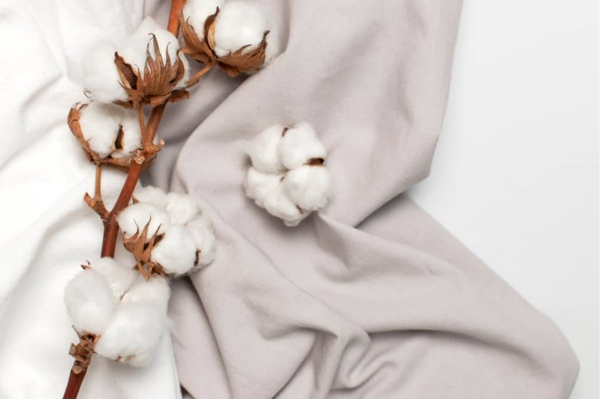
Cotton is a widely used material that comes from a plant called the cotton plant, part of the genus Gossypium and the family Malvaceae. Cotton actually comes from the cotton fibers that grow in the boll, which is the protective coating around the cotton seed.
These fibers are known as staple fibers because they come in different lengths. Cotton fabric is made by spinning and weaving these fibers together to create a strong and durable material.
It is soft to the touch and has a fluffy texture, making it comfortable to wear and use. Cotton fabric is highly versatile and is used to make a variety of products, including clothing, bed sheets, towels, and many other everyday items.
What is Linen Fabric?
Linen fabric, known as flax, is highly durable, absorbent, and quick-drying compared to cotton fabric, making it highly valued in the garment industry.
Linen fabric is an incredibly durable and lightweight fabric made from the flax plant, a member of the Linum genus in the Linaceae family. The term “linen” originates from the Latin name “linum usitatissimum.”
Linen fabric is a natural fiber similar to cotton but takes longer to harvest and process into fabric due to the challenging weaving process. The fibers are extracted from the plant and stored for an extended period to soften them. Linen fabric is a popular material used for towels, tablecloths, napkins, and bedding.

Key Differences Between Cotton and Linen Fabric
1. Appearance
Both fabrics get wrinkled easily, but that gives them a sophisticated and comfy look. Linen has more wrinkles, maybe because of the flax plant it comes from.
Linen looks crisp and stiff, while cotton has a softer, smoother appearance.
Linen has attractive patterns and textures, making it trendy and appealing.
Cotton looks neater but can sometimes seem flat and dull.
2. Texture
Linen feels sturdier and rougher than cotton due to its loose weave.
Despite the common belief that linen is scratchy, high-quality linens are actually soft and get even softer with each wash.
Cotton is initially softer but can clump and get damaged over time since its fibers are more delicate.
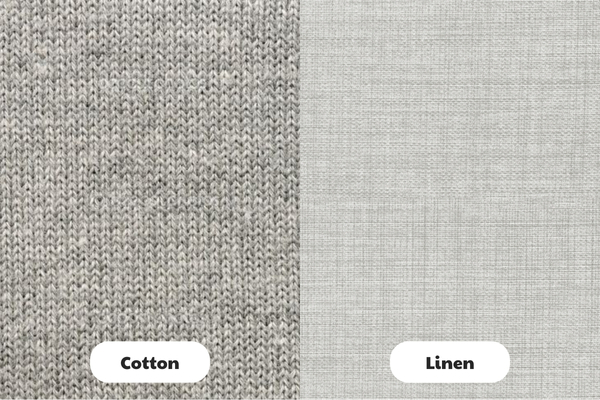
3. Breathability
Both fabrics are breathable, but linen allows more air circulation due to its long, hollow fibers.
Linen has excellent breathability and temperature-regulating properties, making it a popular choice for bedding.
Cotton’s breathability depends on its weave, with canvas and denim being less breathable.
4. Warmth
Linen keeps you cool in hot weather and can provide warmth in colder times. Its porous nature allows air to move freely, helping to regulate temperature.
Cotton doesn’t insulate as well as linen and is better when combined with other fabrics for warmth.
5. Water Absorption
Linen absorbs water faster than cotton, making it ideal for making towels. And it also dries quickly.
Both fabrics become more durable when exposed to water, but linen becomes softer with each wash, while cotton can deteriorate after many washes.
One downside to cotton is that it can sometimes have a musty smell if not dried properly, while linen rarely has this problem.
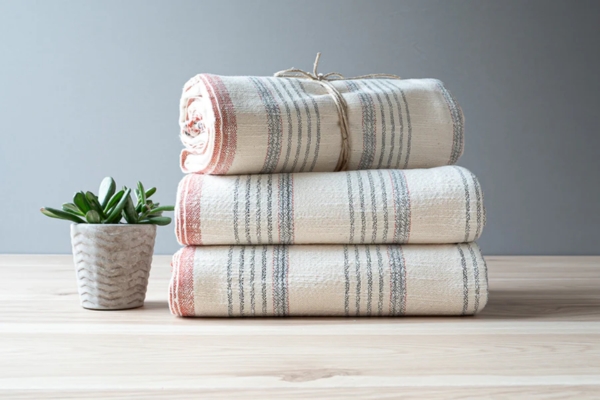
6. Reliability
Cotton clothes are stretchier and more flexible than linen, and they also wrinkle less. At first glance, cotton appears to be more durable than linen, but in reality it’s quite the opposite!
Despite its rigid feel, linen is stronger and more durable due to the looser and more porous weave. Linen has longer fibers and is wound more tightly than cotton.
Some people even consider linen to be one of the strongest natural fibers in the world. Throughout history, people have used linen to make tools, clothing, and even cash!
7. Allergy May Occur
Allergies to fabrics such as cotton and linen are rare. However, some people may experience itching and scaling due to cotton. Short cotton fibers can irritate sensitive skin.
On the other hand, linen is known to be hypoallergenic. Even before, linen was used for bandages.
Linen can absorb about 20% of its weight in moisture without feeling wet. This ability prevents the growth of bacteria and pathogens, which is why linen is used in sanitary items such as napkins and towels.
8. Price
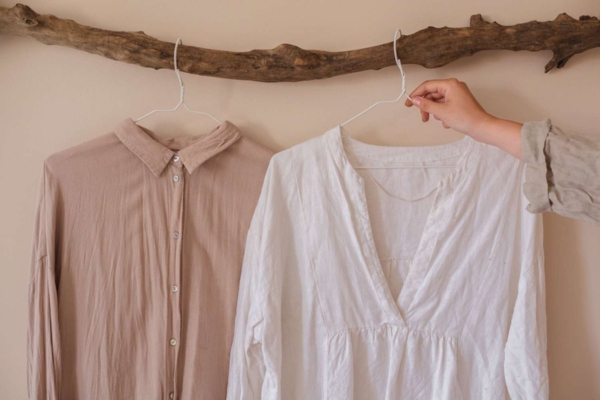
Linen is a popular material, so it’s not surprising that it’s more expensive than cotton. And linen production involves labor-intensive processes and flax supplies are limited.
Cotton, on the other hand, is much more affordable. That is because cotton grows in more areas – easier to harvest and produce.
The price of textiles reflects the effort put into producing them and the benefit the fabric brings. Because linen has superior qualities such as breathability and durability, it is more expensive than cotton.
9. Sustainability
Many people aim for a luxurious and sustainable wardrobe, choosing items with a low carbon footprint and a positive social impact.
In terms of raw materials, cotton has a larger environmental impact. Cotton plants may need chemicals, pesticides and water to grow.
Flax, on the other hand, can thrive without chemicals and is naturally resistant to pests, requiring less water.
However, the cost of producing linen is higher, making it heavier on consumers’ wallets. Cotton fabric is mass produced nowadays so it is more accessible at lower prices, which is why the cotton fabric market share is still much larger than linen fabric.
In the long run, linen is a good investment because it is more durable than cotton. Cotton wears out easily, especially when washed, while linen becomes softer and smoother over time.
Pros and Cons of Cotton vs. Linen
Some fabrics have advantages when used for clothing, while others are beneficial when used for towels or bed linens. Let’s summarize some pros and cons of each fabric type.
| Fabric | Pros | Cons |
| Cotton | – Stretchy and flexible
– Wrinkle less than linen – More affordable – Available widely – Soft and smooth to the touch – Commonly used for everyday clothing |
– Less durable than linen
– Can clump and get damaged over time – Some people may have allergic reactions (but still rare) – Not as breathable as linen – Doesn’t insulate well in colder weather. |
| Linen | – More durable than cotton
– Crisp and stiff appearance – Highly breathable and keeps you cool – Hypoallergenic and gentle on the skin – Becomes softer and smoother with each wash – Sustainable and biodegradable |
– Wrinkles easily, giving a casual look
– More expensive than cotton – Can feel rough and scratchy to some people – Limited availability – Requires special care when washing and ironing |
What’s Better for Fashion?
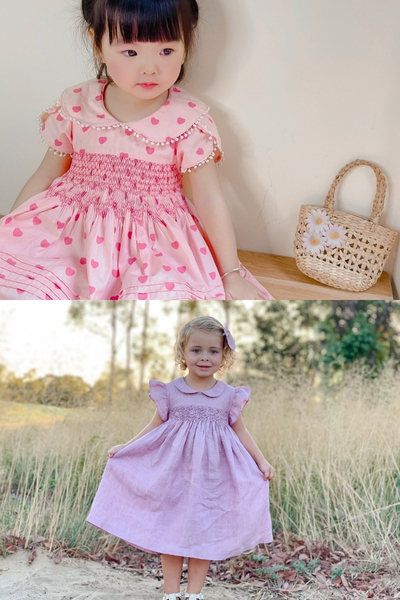
Cotton
- Cotton is great for fashion because it’s soft, comfortable, and flexible.
- It’s commonly used to make everyday clothes like t-shirts, jeans, and dresses.
- Cotton fabrics are available in a wide range of colors and patterns, making it easy to find fashionable options.
- It is also cheaper than linen
However, cotton clothes can wrinkle easily, so you may need to iron them to keep them looking neat.
Linen
Linen is also a popular choice for fashion.
- It has a unique, stylish look that’s perfect for creating trendy outfits.
- Linen clothes are known for their breathability, which means they keep you cool in hot weather.
- Linen garments have a relaxed and casual vibe, making them great for summer dresses, loose pants, and shirts.
However, keep in mind that linen wrinkles easily. While some people embrace the wrinkles as part of linen’s charm, others may prefer a more polished appearance.
| Some factories take advantage of the naivety and lack of knowledge of newcomers to the industry and sell them blended fabrics instead of 100% cotton or linen.
And you are afraid of falling into such a situation? Come to K-Embroidery! We are a factory specializing in producing smocked children’s clothing. If you prefer cotton, we can provide you with 100% cotton products. And if you prefer linen, we also have it available for you. These are both fabrics that K-Embroidery often uses for our smocked children’s clothing products because they are friendly to baby’s skin and are both high quality, cool and breathable fabrics. Just take a tour around our factory, and you can easily distinguish the difference between the two fabric types. More information? Contact our Sales team at WhatsApp: +84 85 555 5961. |
Conclusion
In conclusion, when it comes to choosing between cotton and linen, it’s important to consider your specific needs and preferences.
Cotton is soft, affordable, and suitable for everyday clothing, but it may not be as durable. Linen, on the other hand, is more durable, breathable, and has a stylish appearance, but it can wrinkle easily and be more expensive.
Each fabric has its own advantages and disadvantages, so it’s up to you to decide which one best suits your fashion and lifestyle choices.


